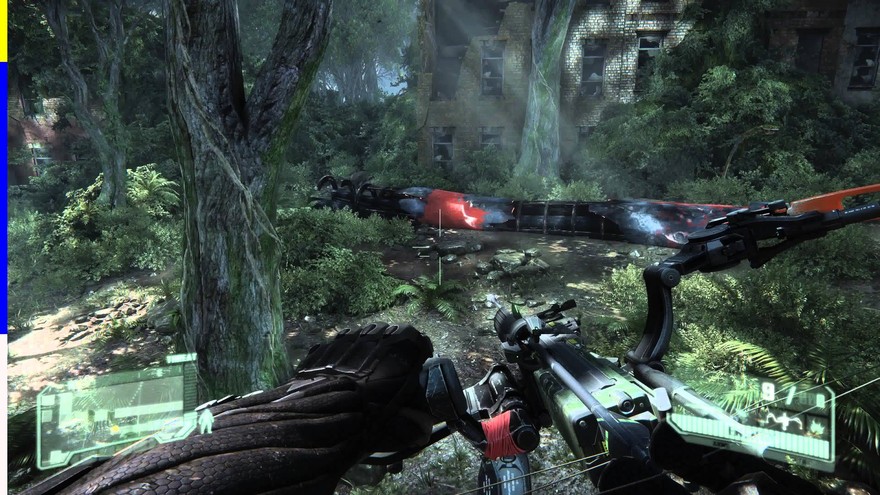This article is part of a collaboration with iQ by Intel.
Remember that fateful day when you finally splurged on a high definition television and mounted it on the wall? Of course you do. The consensus among everyone in the room, even small children, even the dog, was a nonplussed “is this real-life?” There was no way it was getting any better than this.
Well, here comes a glorious, mile-long 12K gaming rig to prove us all wrong.
As of right now, 12K gaming is the holy grail when it comes to games that are exceptionally pretty to look at. To understand how truly impressive 12K is, you first must understand 4K technology, which powers the impending swarm of ultra-detailed monitors that most prognosticators presume will someday saturate the market and make all those enshrined HDTVs obsolete. These forthcoming 4K monitors offer roughly four times the crystal clarity as plain old high-def, getting even closer to the level of detail our actual eyes perceive.
One of the few 12K setups—that’s three 4K monitors, positioned on a long table, side by side by side—was built by Nicholas Gniech, on showcase at Intel Developer Forum 2014. The wall of monitors looks like something you’d see a security guard dozing off in front off, except it plays video games, so he’d probably be having a great time.

Now, this pleasure cove is not at all practical. One of these monitors isn’t yet cost-effective for the average person, and getting one to run requires heavy tooling around with advanced computing procedures. “No games are going to support 12K,” Gniech told me at the Forum, and, on cue, the game crashed. Still, there’s something admirable about this do-it-yourself pursuit to bring out games at their shiniest.
The fact of the matter is that games aren’t even ready for 4K. While developers are starting to include the option to play at 4K resolution, they won’t truly be reaping the breathtaking benefits for a long while. That would require an investment in art and assets that frankly isn’t worth it, since only the most formidable computers on the market can hang. “In order to do 4K gaming you need a lot of graphic power. They say computers can run 4K, but they only run the desktop at 4K. They can’t do the 3D gaming that people are used to. They can’t do this,” he explains, pointing to a huge beast of a machine. “We’re a little bit in the future right now,” he says.
Advanced as it may be, 12K gaming is also held back by the present. Getting everything to display correctly can require a bit of alchemy and a stroke of luck. The visuals in a game like Crysis 3 are extraordinary, a sight to be seen, but seem a touch off-kilter at times. A player standing next to us, normally off-screen, may run through the jungle shooting at nothing. Certain parts of the screen are stretched out and blurry. Some of the greenery in the distance is hazy. Elsewhere, the environment looks crisp and razor-clean. “The games could look a lot better than this. Right now they’re optimized for present-day screens. None of those games will look that great,” he admits.
And yet there’s an incredible amount of potential on display. Gniech boots up last year’s Assassin’s Creed game and gives me a tour of that game’s world, pointing out all the shrubbery and trees that aren’t as refined as they could be. It’s true that when we set out in search of supreme beauty, the things we once thought were beautiful turn out to be kind of ugly. Then he comes to a cluster of rocks on the beach break. They are magnificent, a song in praise to rock-ness, with crevices that have their own crevices. I would include a picture—but then, you’d need a 4K monitor to appreciate it. Soon enough, we’ll all understand how high a definition can go.
